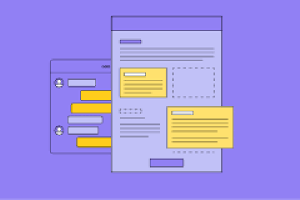
Email Design 101: Key Principles and Best Practices for Effective Email Layouts
 Effective email layout is an essential component of successful email marketing. To create an email that captures the attention of your audience and drives engagement and conversions, it is important to follow some key principles and best practices.
Effective email layout is an essential component of successful email marketing. To create an email that captures the attention of your audience and drives engagement and conversions, it is important to follow some key principles and best practices.
Firstly, it is important to keep your email design simple and easy to read. Using a clear hierarchy, concise language, and a limited color palette can help to achieve this. Additionally, using responsive design that adapts to different screen sizes is crucial as more and more people access their emails on mobile devices.
Another key principle is to create a clear call-to-action that is prominently displayed in your email. Using action-oriented language and providing a clear benefit to encourage clicks is important in driving engagement.
Visuals can also be a powerful tool for capturing attention and conveying information, but they should be used strategically. High-quality images that are relevant to your content should be used, but using too many images or large files that may slow down load times should be avoided.
White space is the area around your content that is left blank, and using it effectively can create a clean and organized layout that is easy to read. Branding elements such as colors, fonts, and imagery can also be used to create a cohesive and recognizable email design.
Finally, testing your email design across different email clients and devices is crucial to ensure that it displays correctly and effectively across all platforms.
In conclusion, effective email layout is crucial for capturing the attention of your audience and driving engagement and conversions. By keeping it simple, using responsive design, creating a clear call-to-action, using visuals wisely, using white space effectively, using branding elements, and testing your design, businesses can create effective and engaging email campaigns.
